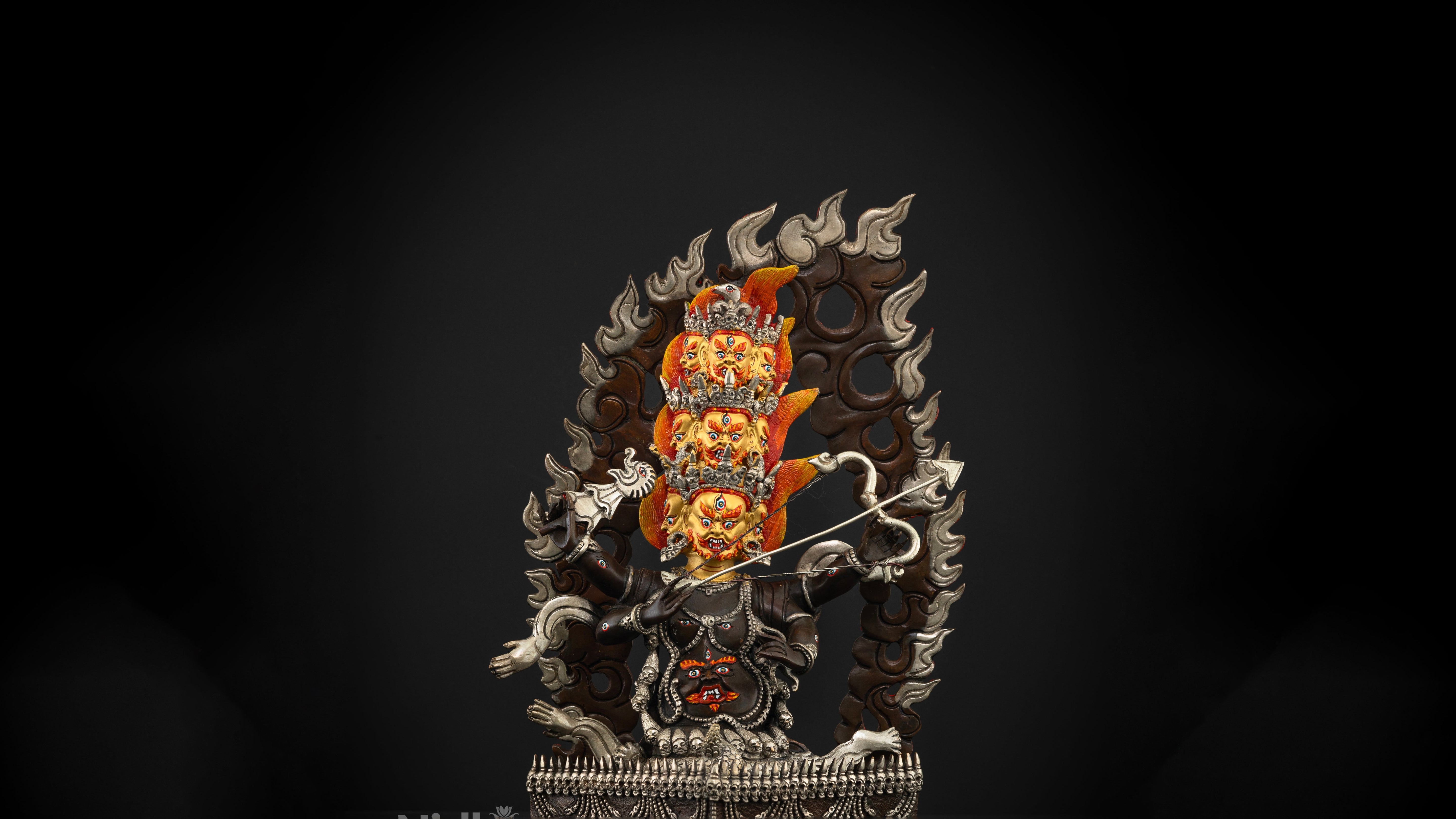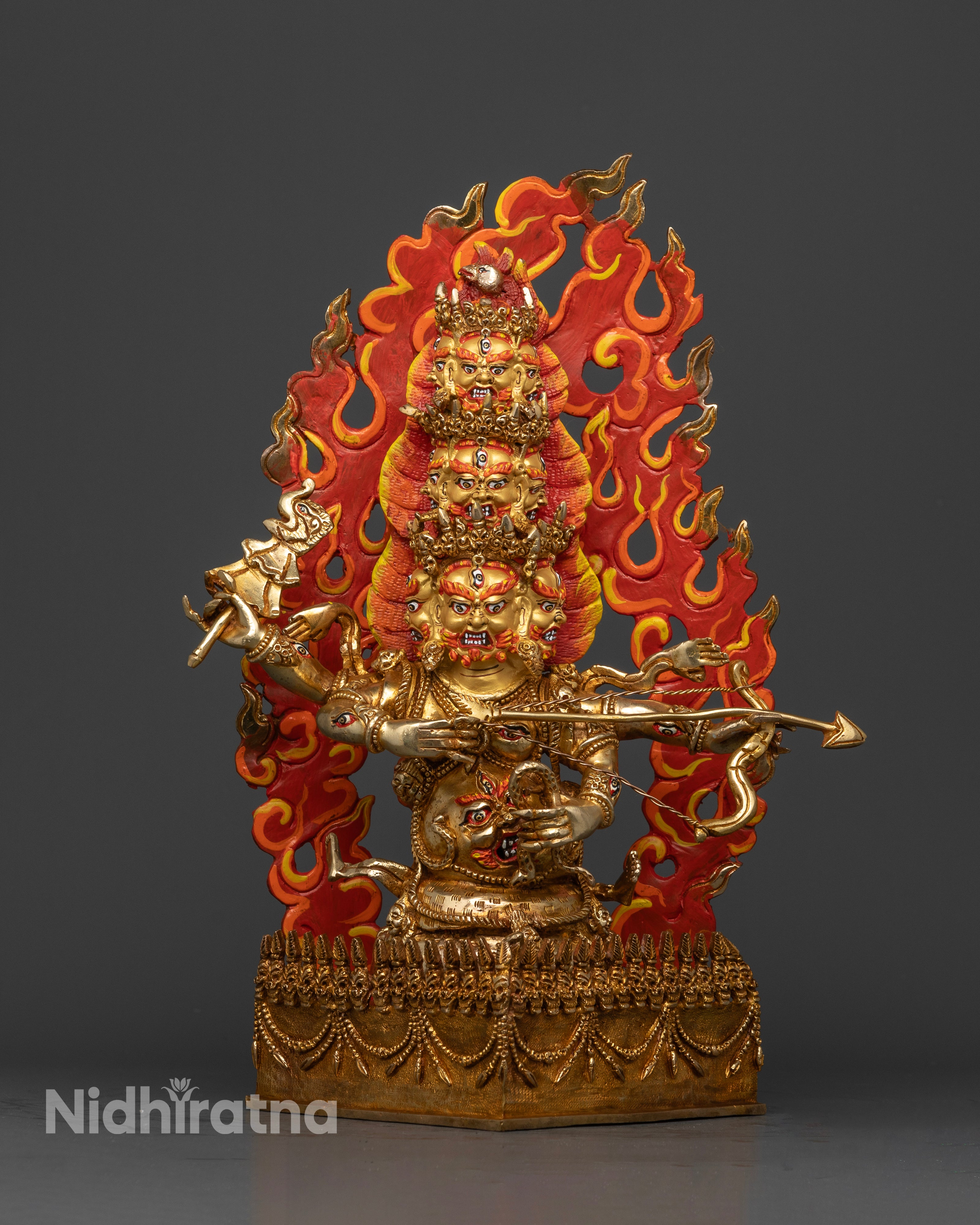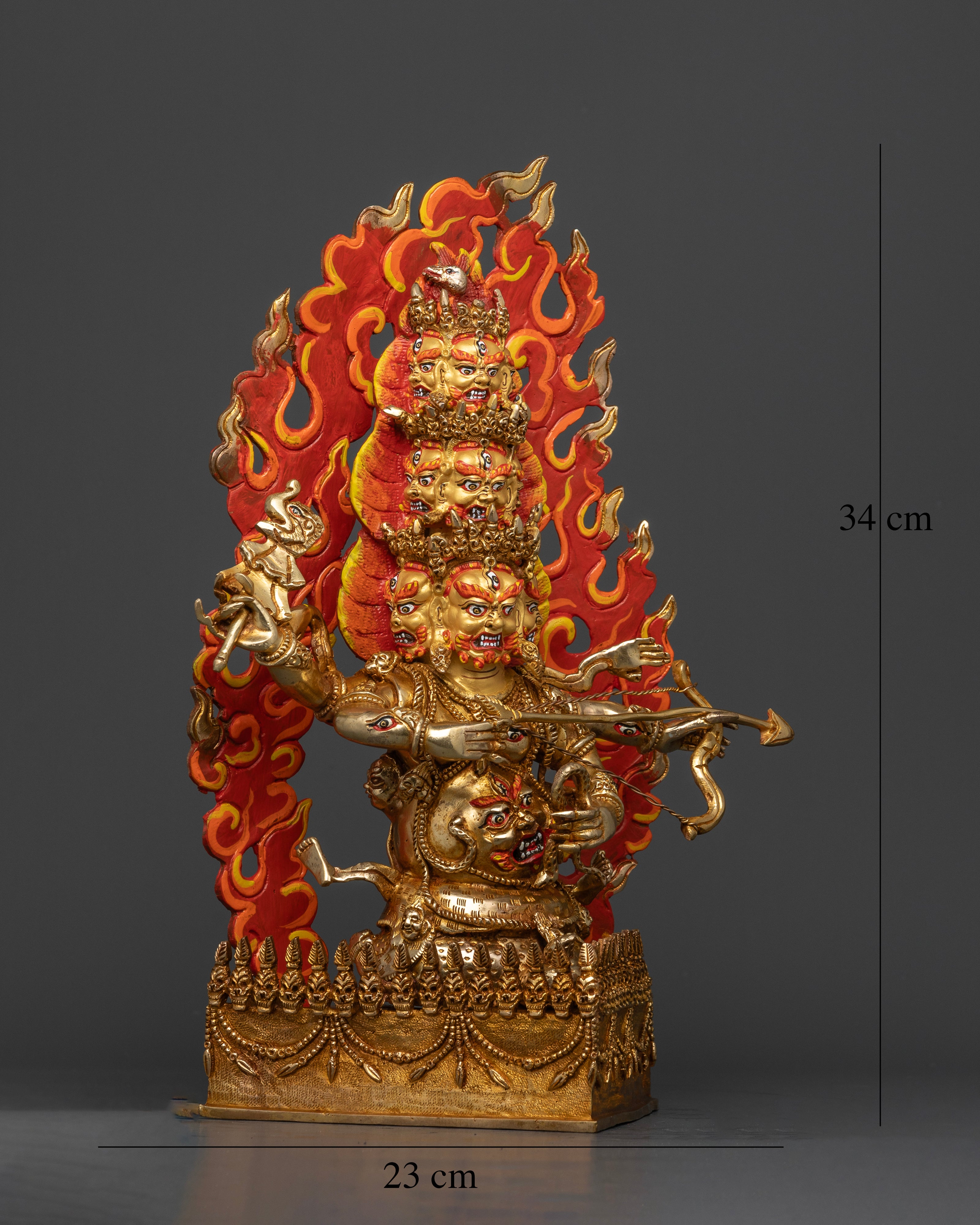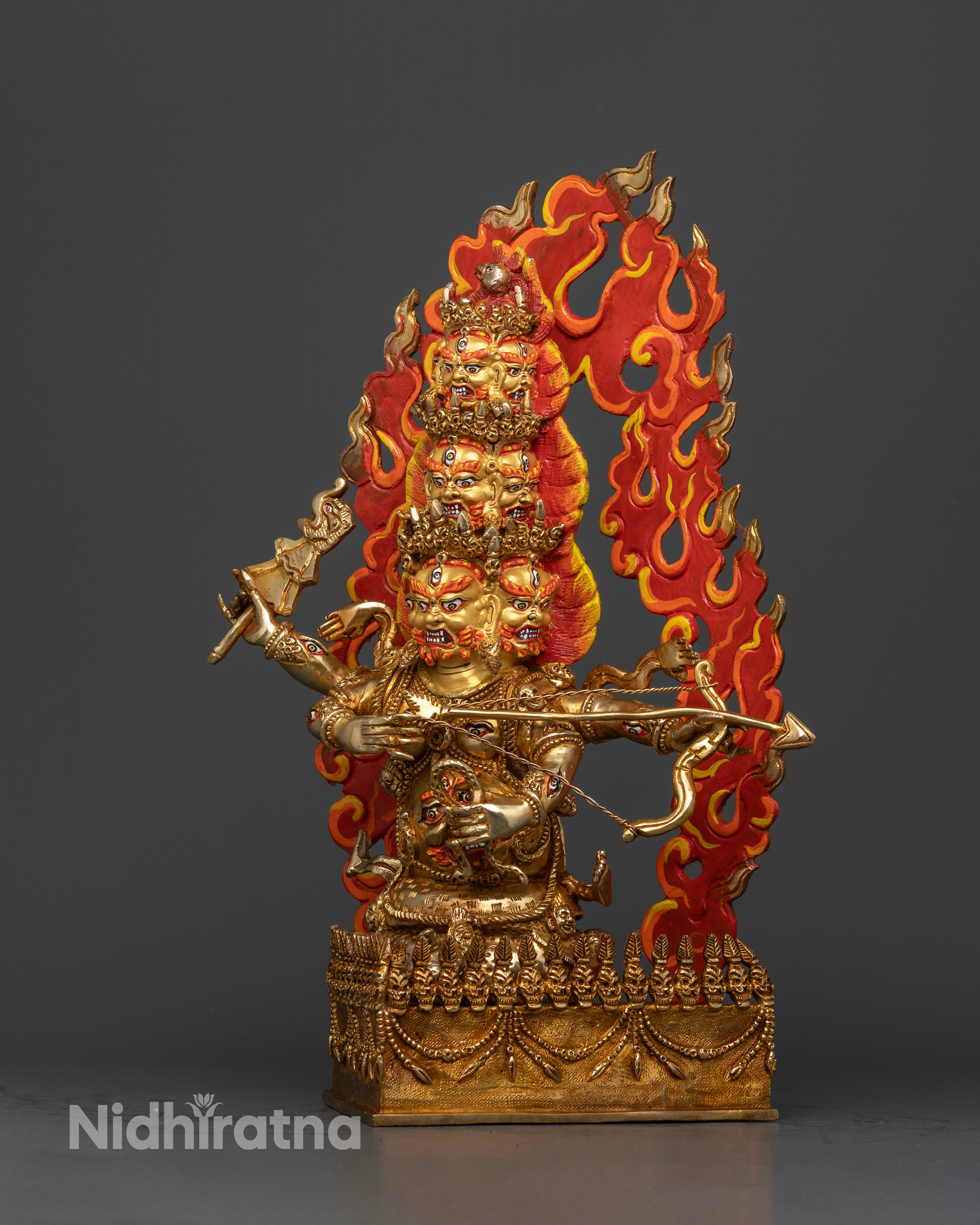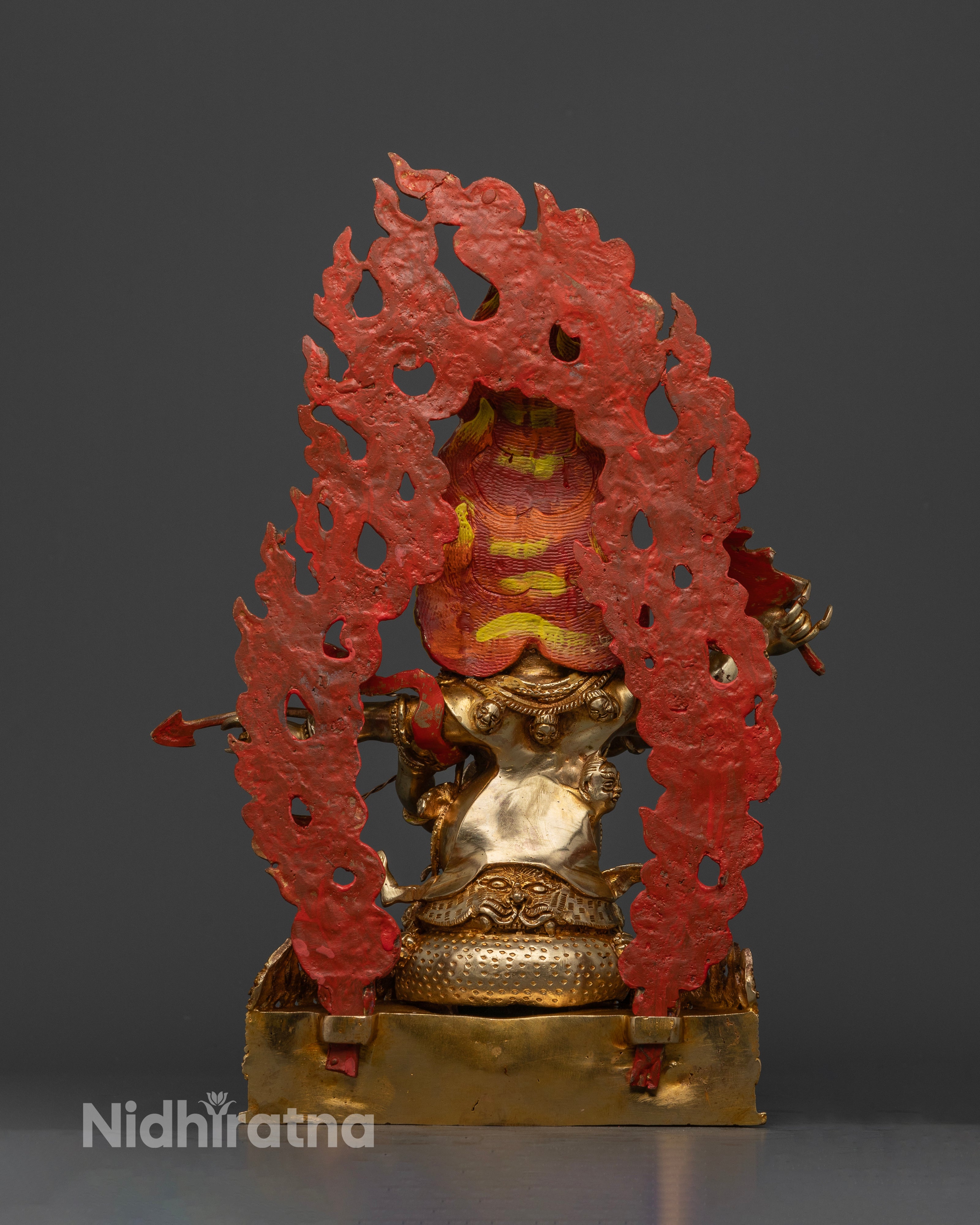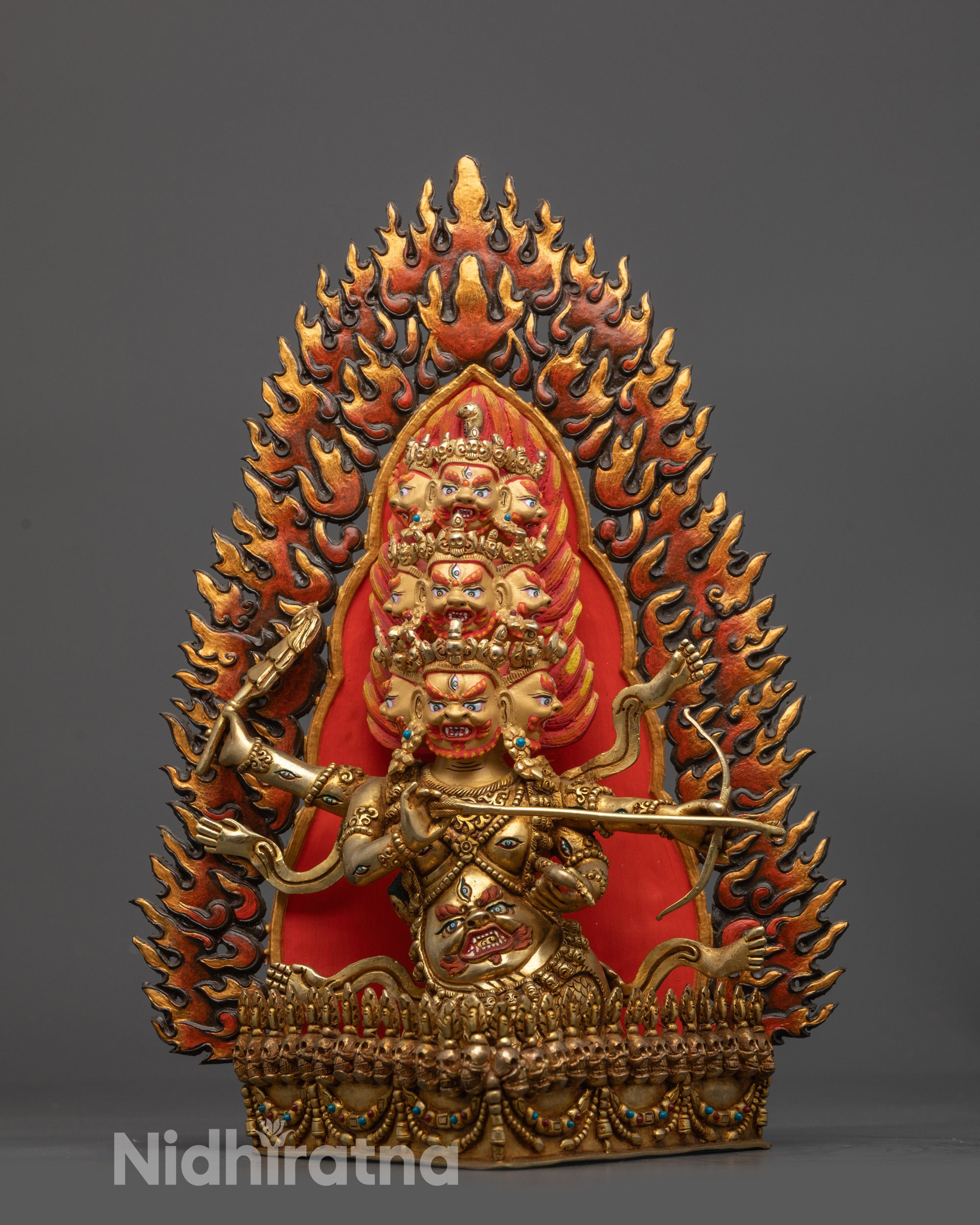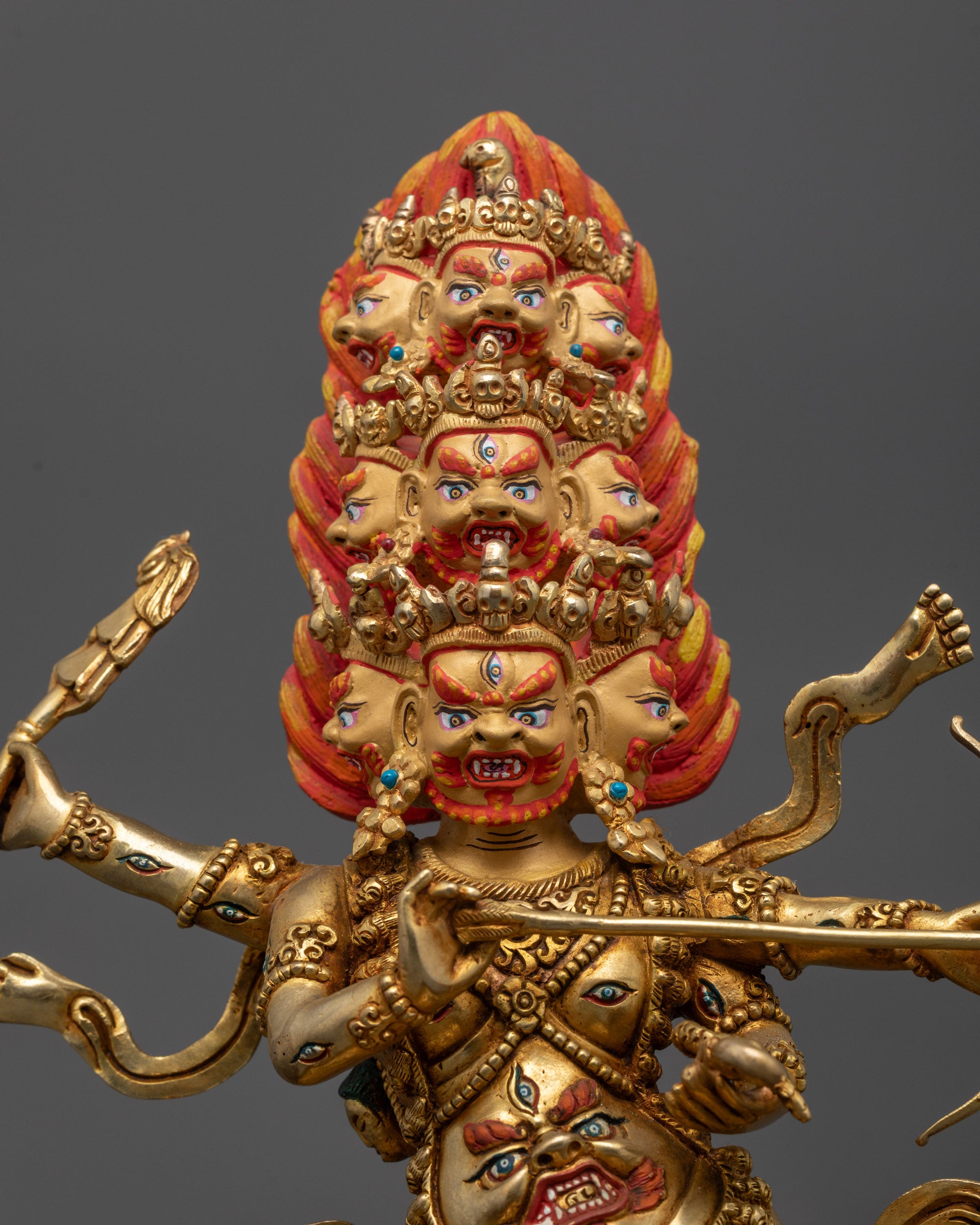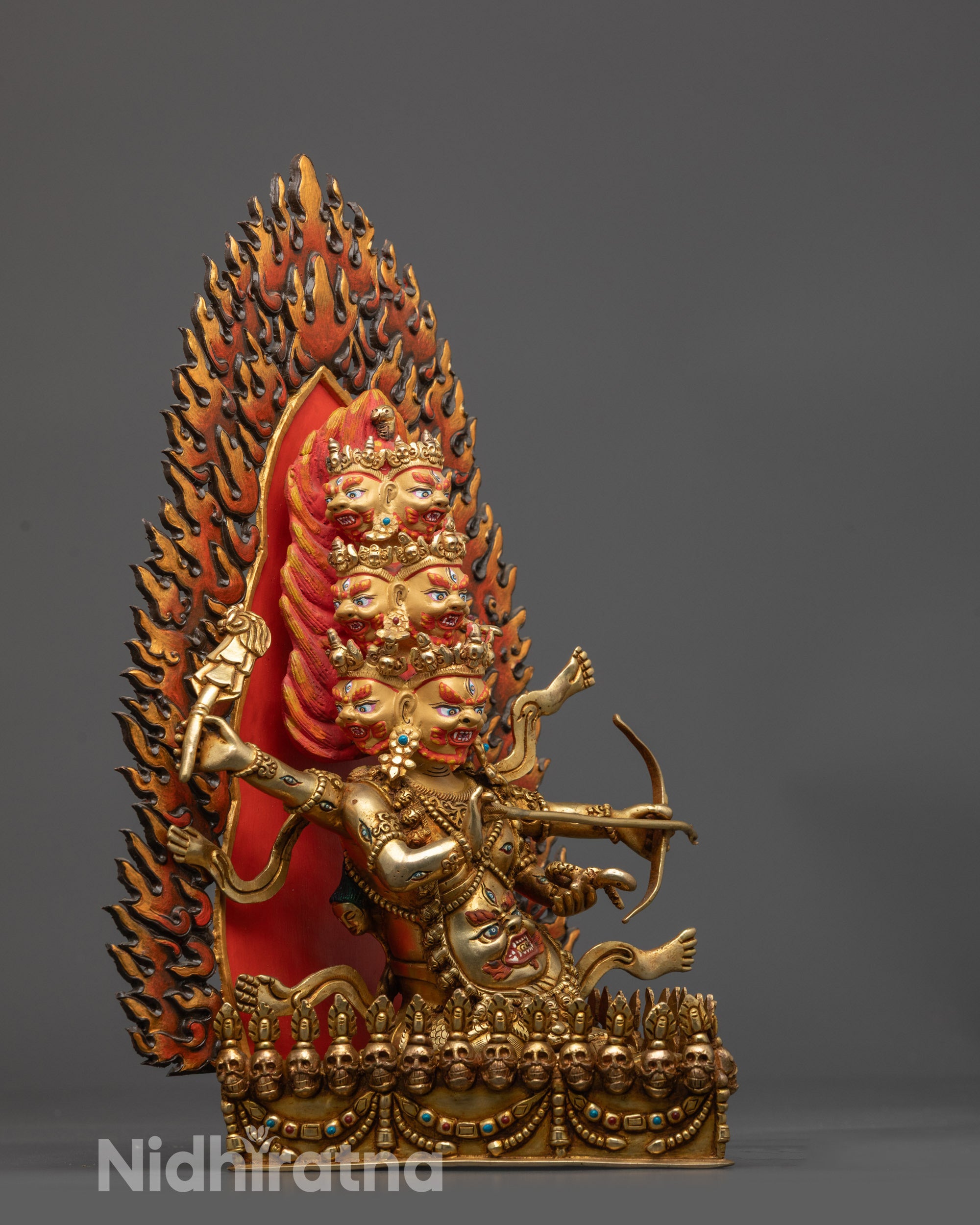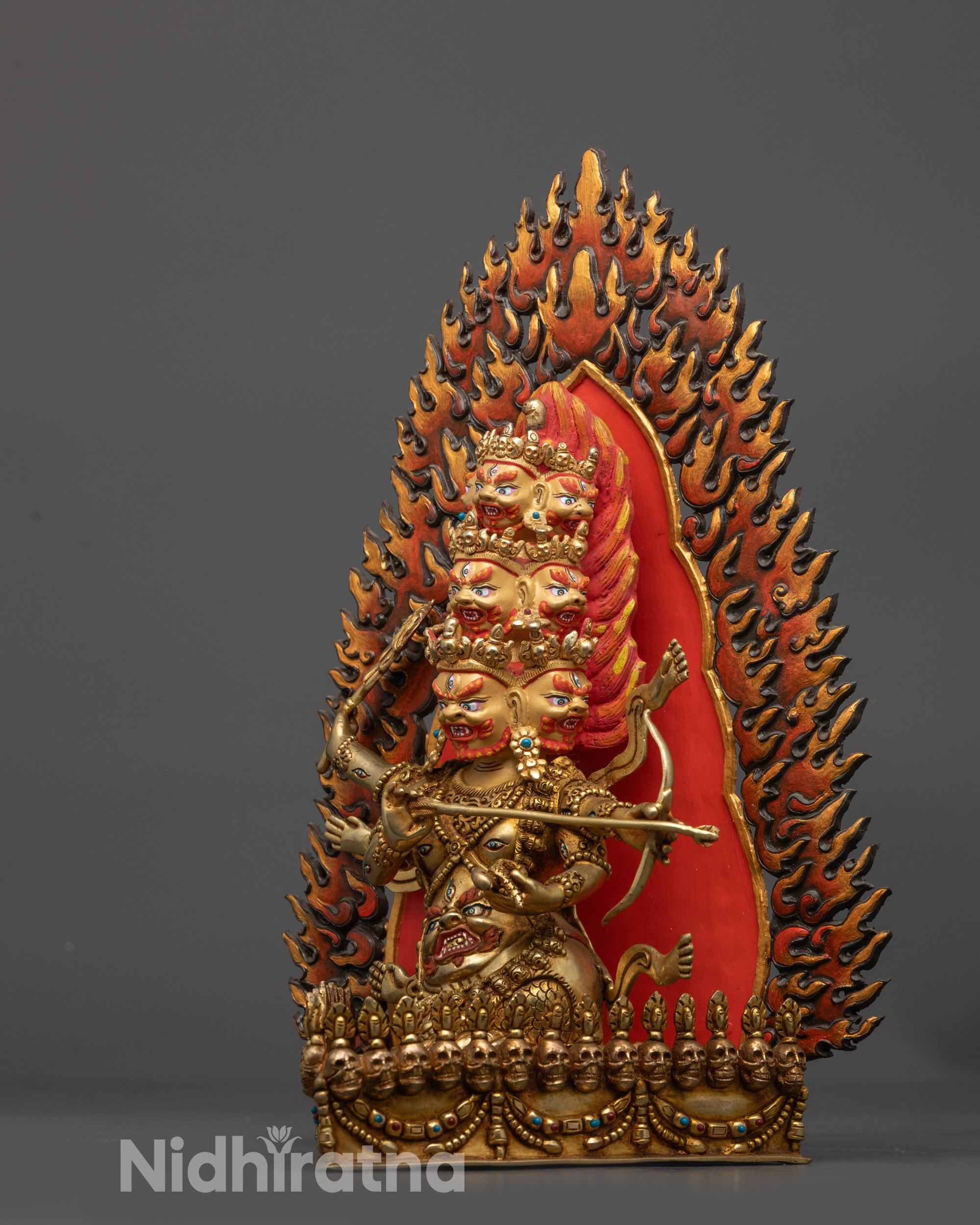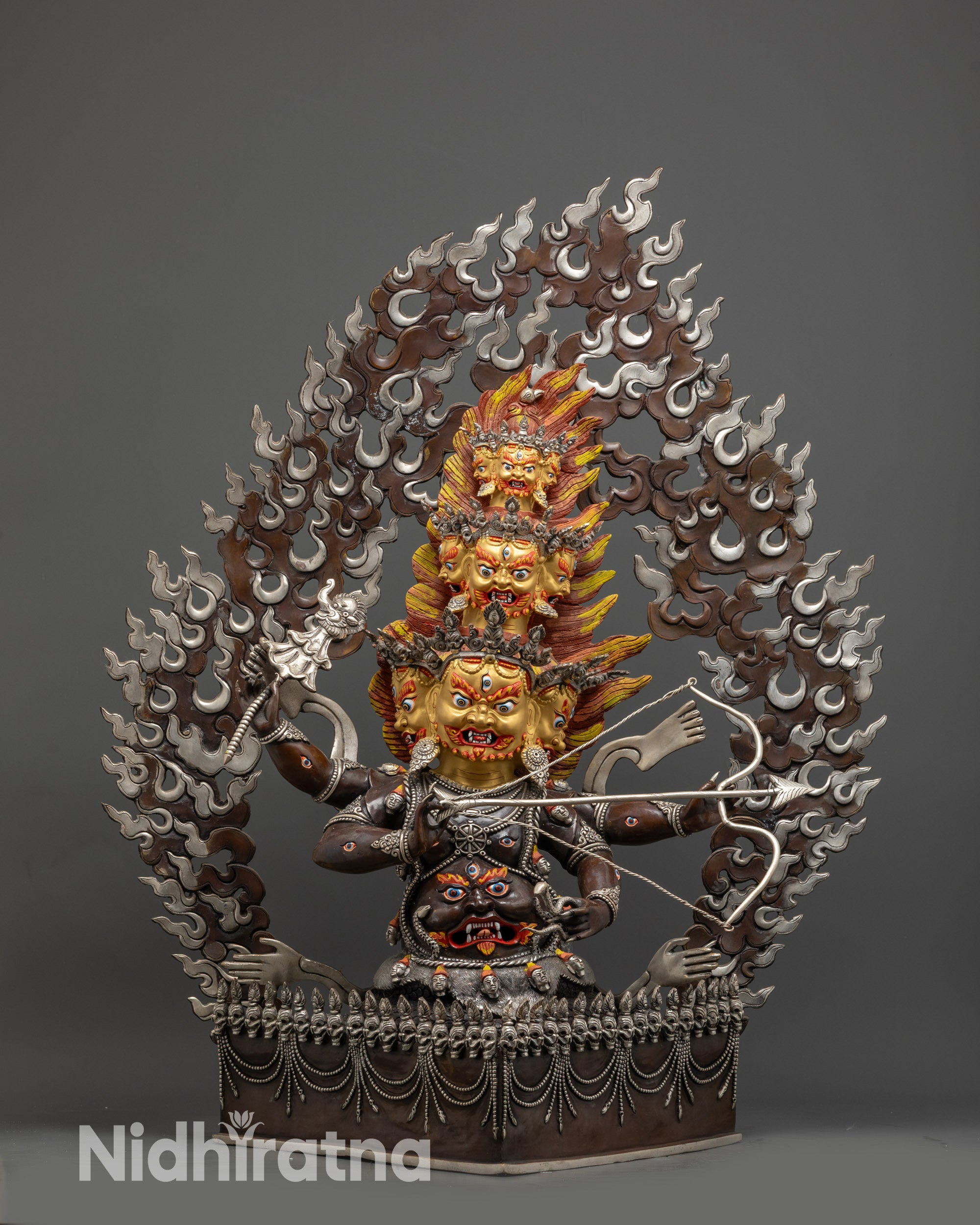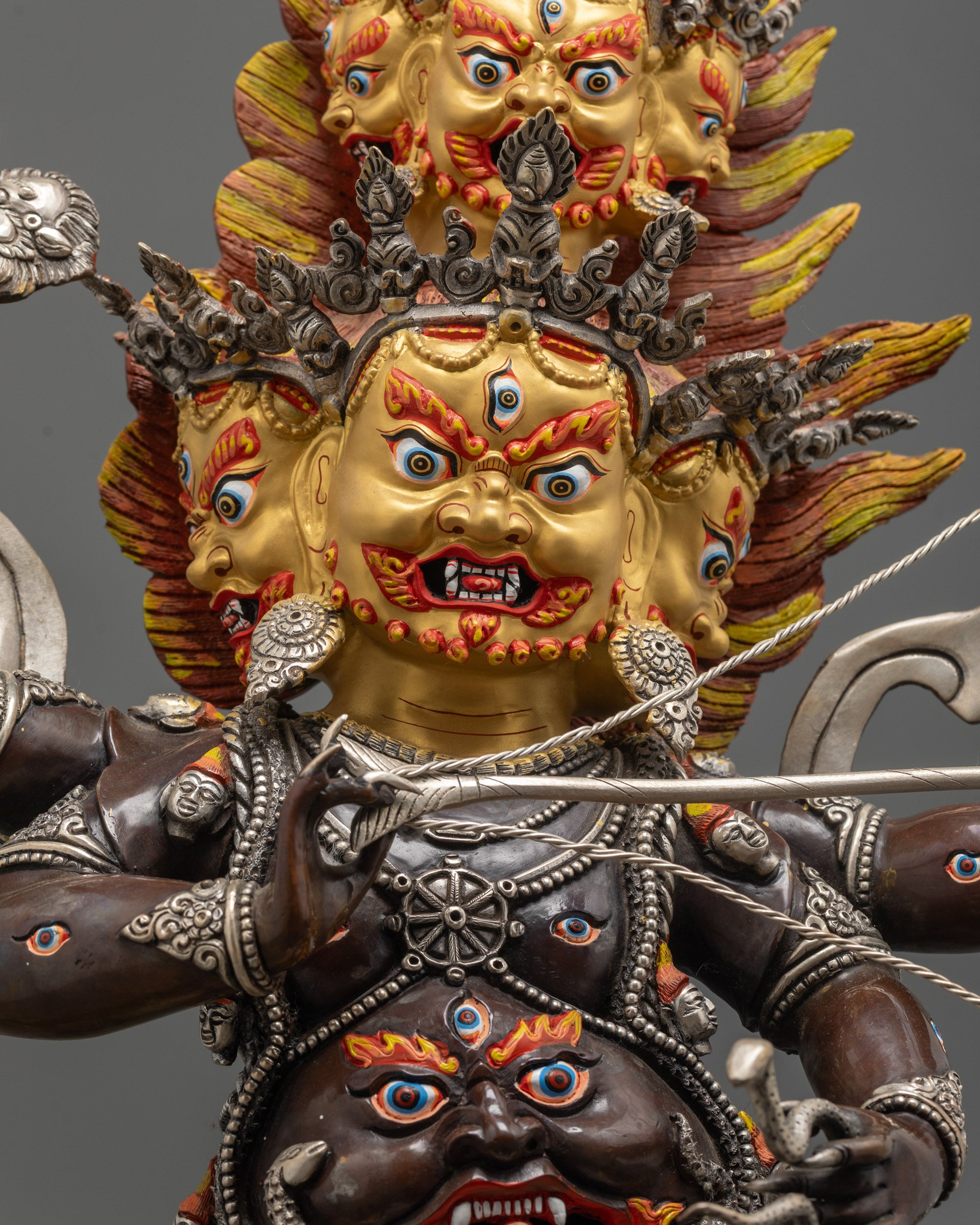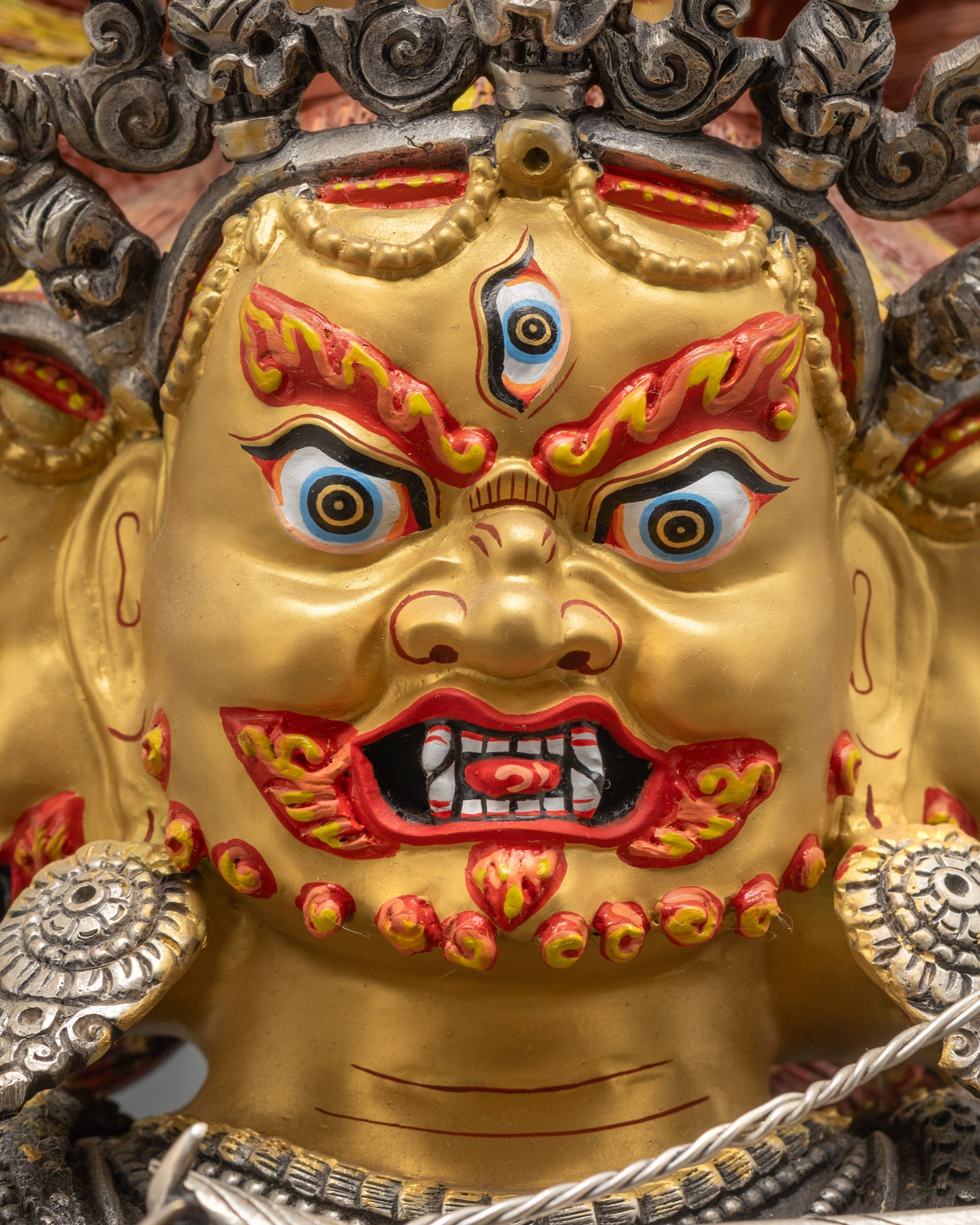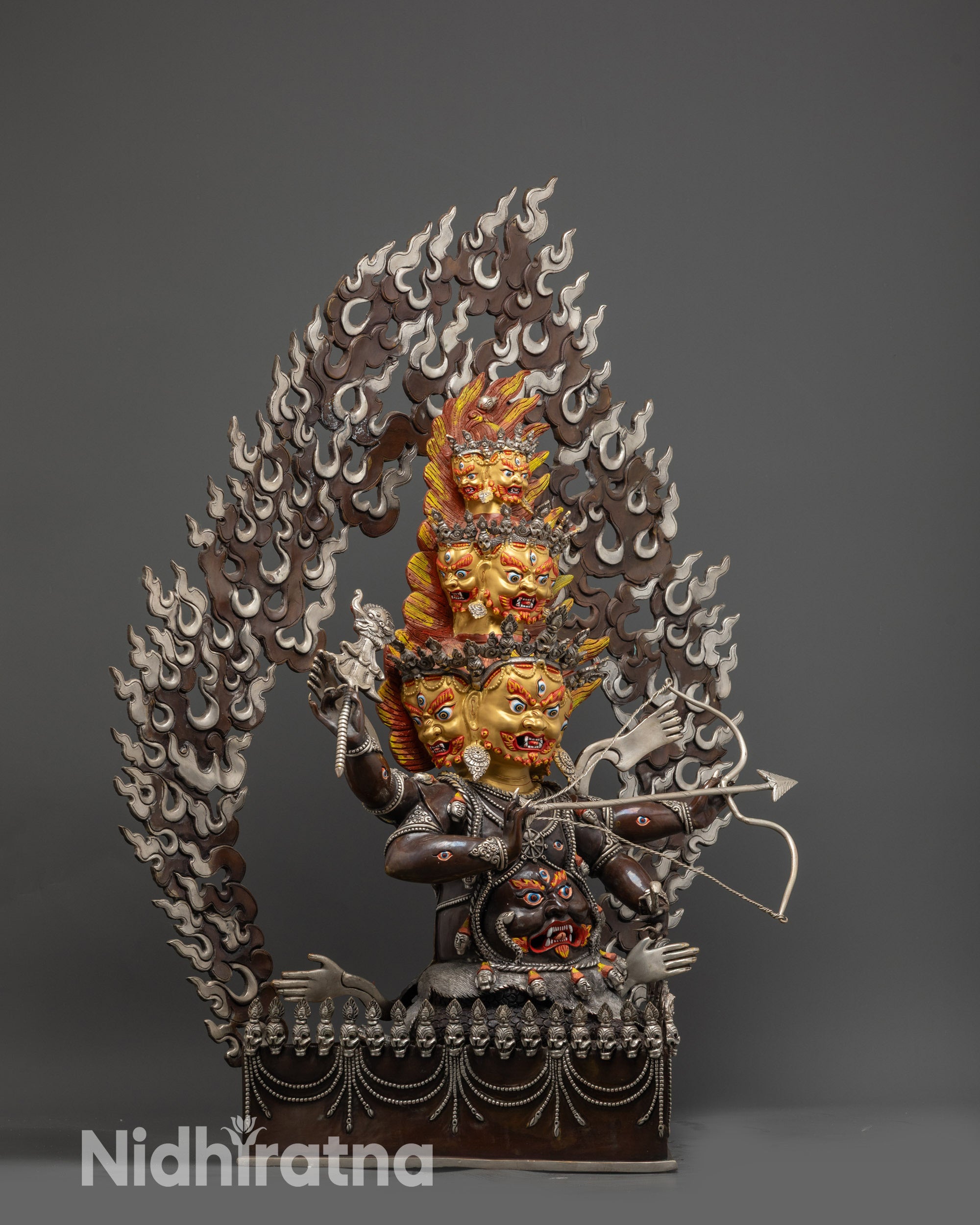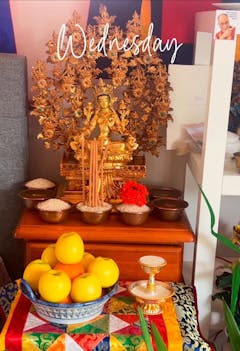Guardian of Truth: The Power of Mahakala Rahula
Handcrafted Rahula Sculpture | Spiritual Buddhist Art for Sacred Space
Machine-Made Rahula Statue | Buddhist Guardian in Oxidized Finish
Silver Plated Rahula Statue | Handmade Tibetan Protector Deity
Rahula Statue: The Guardian of Truth and Transformation
Rahula statue stands as a powerful embodiment of purity, truth, and the transformative potential of wisdom. Rahula is the son of Shakyamuni Buddha, represents the purity and clarity of a mind untarnished by attachments. In the Buddhist tradition, Rahula's life and story symbolize the early stages of spiritual practice, serving as a reminder of the importance of renunciation, mindfulness, and the deep pursuit of enlightenment.
This statue is meticulously hand-crafted by skilled Nepalese artisans, using a copper base with exquisite gold gilding that adds depth to Rahula's serene and youthful appearance. The intricate details of his posture, facial expression, and the symbolism woven into his form reflect his role in the Buddhist teachings and the inspiration he provides to practitioners on their path to awakening.
Rahula: The Son of Buddha and the Symbol of Purity
Rahula is a central figure in Buddhist texts and is especially significant in the context of the early life of Shakyamuni Buddha. As the Buddha’s son, Rahula is often depicted as a youthful figure, reflecting the innocence and potential for spiritual growth that all beings possess. Despite being born into a royal family, Rahula chose to follow in the footsteps of his father by renouncing worldly attachments and seeking the truth of existence.
The most notable story associated with Rahula is his decision to follow the Buddha after his father’s renunciation of the world. Rahula, at a very young age, recognized the impermanence of life and the suffering that arises from attachment. His decision to renounce his privileges and become a disciple of the Buddha highlights the importance of early spiritual dedication and the willingness to pursue enlightenment, even at a young age.
In his role as the Buddha’s son, Rahula's story is a beacon for those embarking on the path of Dharma, illustrating how even amid a materialistic world, one can choose the pursuit of wisdom, ethical conduct, and spiritual liberation.
Symbolism and Features of the Rahula Statue
Nidhiratna’s Rahula statue carries profound symbolism and intricate features that are deeply embedded in his spiritual significance. Each element of the statue has been thoughtfully designed to convey Rahula’s role as the son of the Buddha, his commitment to purity, and his place in the Buddhist teachings.
Youthful Posture and Expression: Rahula is often depicted as a young boy, seated in a calm and composed posture, which reflects his early commitment to the path of enlightenment. His youthful face exudes innocence and clarity, signifying his pure intentions and his early realization of the nature of suffering and impermanence. The serene expression on his face also symbolizes his unshaken resolve to follow the Buddha’s teachings.
-
A Gesture of Renunciation: Rahula is typically shown with one hand raised in a gesture of renunciation, a symbolic gesture of rejecting worldly attachments and material desires. This gesture is meant to remind practitioners of the importance of letting go of distractions in order to fully focus on the pursuit of wisdom and liberation.
-
Lotus Seat: Rahula is often depicted seated upon a lotus, symbolizing the purity of his mind and the potential for spiritual growth. The lotus flower, which grows out of muddy water yet remains unstained, is a powerful symbol in Buddhism, representing the potential for purity and enlightenment even amidst the challenges of samsara.
-
Dharma Wheel or Scripture: In some depictions, Rahula may hold a small Dharma wheel or scripture, symbolizing his connection to the teachings of the Buddha. This emphasizes his role as a diligent student and practitioner of the Dharma, ever focused on the pursuit of truth and wisdom.
- Adornment and Robes: Rahula is often shown wearing simple yet elegant robes, symbolizing his renunciation of material wealth and his commitment to a life of simplicity and mindfulness. The simplicity of his appearance reflects the humility and discipline that are central to the Buddhist path.
Spiritual Role of Rahula
As the son of Shakyamuni Buddha, Rahula plays an essential role in illustrating the early stages of spiritual awakening. His life story highlights the importance of renunciation, discipline, and mindfulness in the pursuit of wisdom. Rahula’s unwavering commitment to the Dharma, despite his young age, serves as an inspiration for practitioners of all ages, showing that it is never too early or too late to begin the journey of self-realization and liberation.
Rahula’s purity and deep commitment to the teachings of the Buddha exemplify the qualities that all practitioners should strive to cultivate. His devotion to the Dharma, despite the distractions of the material world, serves as a reminder to focus on the true essence of existence and to let go of the attachments that bind us to samsara.
Rahula's Influence on the Buddhist Path
Rahula's role in the Buddhist narrative extends beyond his personal story. He is often seen as a symbol of the potential for transformation that lies within every individual, especially those who are willing to embrace the truth of suffering and the impermanence of life. His decision to renounce his royal lineage and follow the Buddha's teachings is a powerful reminder that enlightenment is accessible to all, regardless of birth or background.
In his role as a disciple, Rahula is often associated with the cultivation of right mindfulness and ethical conduct. His story emphasizes the importance of right effort, the right concentration, and the right view, which are essential components of the Noble Eightfold Path. Rahula's commitment to these practices from an early age demonstrates the profound impact that these teachings can have on one's spiritual development.
Mantra of Rahula
While Rahula is not directly associated with a widely known mantra like some other Buddhist deities, his connection to the teachings of the Buddha and his representation of purity and wisdom make him a significant figure for those seeking guidance on the path of renunciation and enlightenment. The recitation of the mantra of the Buddha, Om Mani Padme Hum, can be used to invoke Rahula’s qualities of purity and devotion, helping practitioners to cultivate a mind free from attachment and full of clarity.
Conclusion
Nidhiratna's Rahula statue is a profound representation of the power of renunciation, purity, and spiritual commitment. With its intricate design and deep symbolism, this statue invites practitioners to reflect on their own spiritual journey and the importance of cultivating mindfulness, discipline, and wisdom. Rahula’s early dedication to the Buddha’s teachings reminds us that the path to enlightenment is open to all, regardless of age or status, and that the pursuit of truth and wisdom is the ultimate path to liberation from suffering. Through this statue, practitioners are inspired to follow Rahula’s example, letting go of worldly attachments and embracing the path of purity, wisdom, and self-transformation.

